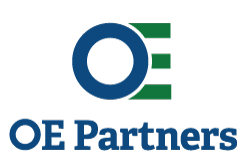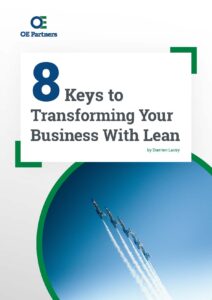‘A penny saved is a penny earned’ is an adage that every business owner will be familiar with, but often that penny can be very difficult to save.
Many decision-makers see saving as synonymous with radical cost cutting measures such as salary reductions, lay-offs, restructuring and downsizing facilities, but this is a misconception for two reasons:
Firstly, it is often not the solution when dealing with high cost-per-unit or cost-per-acquisition businesses. In many cases, cutting too deep and into the “muscle and bone”, can reduce an organisation’s productivity or cumulative skillset, making it more difficult – and thus expensive – to produce a product or deliver a service.
Secondly, the causes of these high costs are often hidden deeper in the organisation and won’t be found in an employee’s pay-packet or facility’s utilities bill.
Lean Methodology - Delivering Solutions to Your Organisation's Challenges
A new approach to cost reduction
At OE Partners, we believe that there are more intelligent and effective ways to pursue cost reductions, key amongst them the lean methodology.
Lean methodology is an approach derived predominantly from the legendary Toyota Production System which took the Japanese auto-manufacturer from a small organisation to the international market leader. While originally focused on manufacturing and logistics processes, its principles can be applied broadly. Core to the system is the identifying and removal of various forms of waste (muda in the original Japanese) that drain productivity and profitability.
The lean methodology has become so widely used because it provides businesses with the lens needed to see clearly and identify the impediments to their success. Even modern, data-driven businesses frequently leave decision-makers with incomplete pictures of what’s really happening on the shop floor, leading to best guesses and trial-and-error approaches to problem solving that often do more harm than good.
Lean breaks with this, providing a clear schema for decision-makers to follow to help them identify what’s really affecting their profitability. While there’s no step-by-step guide to growing your business’ revenue, lean does help to identify common areas of systemic wastage that cumulatively affect the business’ ability to perform at its very best.
Categorising organisational waste
In the original Toyota Production System, eight forms of waste were identified:
- Transport – movement of products in excess of what is required to perform processing.
- Inventory – failing to process raw materials, works in progress, or components into a finished and saleable product.
- Motion – people moving or walking more than what is required to perform processing (e.g. excessive travel time between workstations).
- Waiting – waiting for the next production step, or interruptions to production such as shift changes.
- Overproduction – production in excess of what can be sold at the moment (same principle as Inventory)
- Over-processing – overly lengthy or expensive processes resulting in choosing more complex, costly or precise parts than absolutely required to meet market expectations.
- Defects – the resources/capital lost through disposal of defective products as well as the effort sunk into inspecting for and fixing those defects.
- Space - space is a limited commodity and comes at a high price in rent and overheads. Holding excess stock, work in progress, laying processes out inefficiently, all take up excess space and add to overheads.
Various other concepts have been proposed as a ninth form of waste, including underutilisation of skills; uncertainty about responsibilities, goals or processes; improper use of computers; working to incorrect metrics; and producing products that do not meet market demands or customer specifications.
Implementing Change
After sources of waste in the current system have been identified, decision-makers should take a broad approach to redesigning processes. Core processes should be simplified as much as possible to ensure total understanding on the part of the workforce. Streamlining workflows allows businesses to decrease cycle time and increase productivity, better utilising existing resources and minimising the amount of time before a product can be sold and made to generate profit for the business.
Additionally, it should be understood that no business perfectly embodies all of these principles, and there is always room for improvement.
To learn more about implementing the lean methodology in your organisation, start a conversation with the team at OE Partners.


